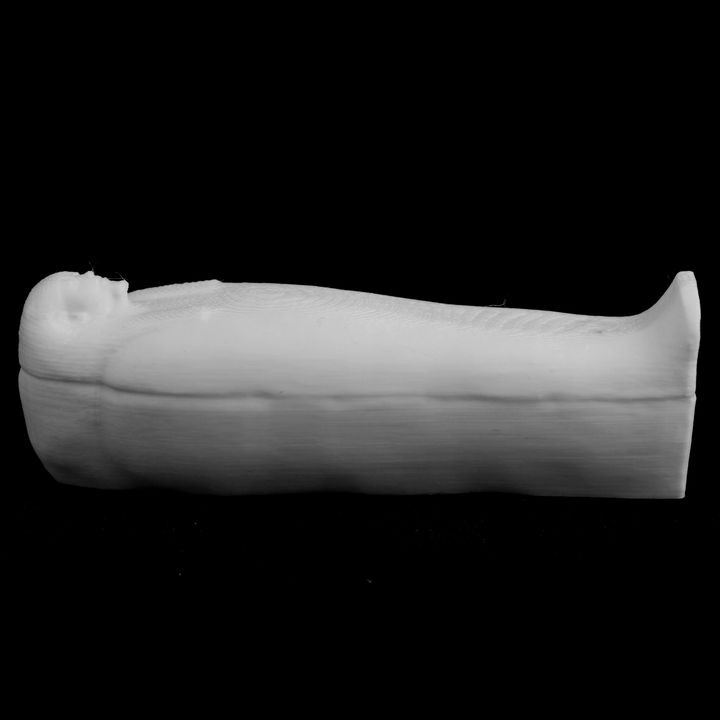
Sarcophagus of Merymose at The British Museum, London
myminifactory
Merymose served as viceroy of Kush (Upper Nubia) during the reign of Amenhotep III (approximately 1390-1352 BC). Kush and Nubia supplied ancient Egypt with valuable resources, and during the New Kingdom (about 1550-1070 BC), these regions produced a significant portion of the gold required by the Egyptian regime. The sarcophagi originated from Tomb no. 383 on the Qurnet Marai hill in southern necropolis (cemetery). Archaeologists discovered this tomb in 1940. Fragments of two other sarcophagi can be found at the British Museum, with additional pieces located at the Musée du Louvre in Paris and various locations throughout the United States. A substantial portion remains in Luxor. This artifact comes from Thebes, Egypt during the 18th Dynasty around 1350 BC. Its dimensions are approximately 196.000 cm (max.) in length, 60.000 cm (max.) in width, and 60.000 cm (max.) in depth. This object is part of "Scan The World," a non-profit initiative launched by MyMiniFactory to create a digital archive of fully printable sculptures, artworks, and landmarks from around the globe for public access at no cost. Scan the World is an open-source community effort; if you have interesting items and would like to contribute, email stw@myminifactory.com to learn how you can participate.
With this file you will be able to print Sarcophagus of Merymose at The British Museum, London with your 3D printer. Click on the button and save the file on your computer to work, edit or customize your design. You can also find more 3D designs for printers on Sarcophagus of Merymose at The British Museum, London.
